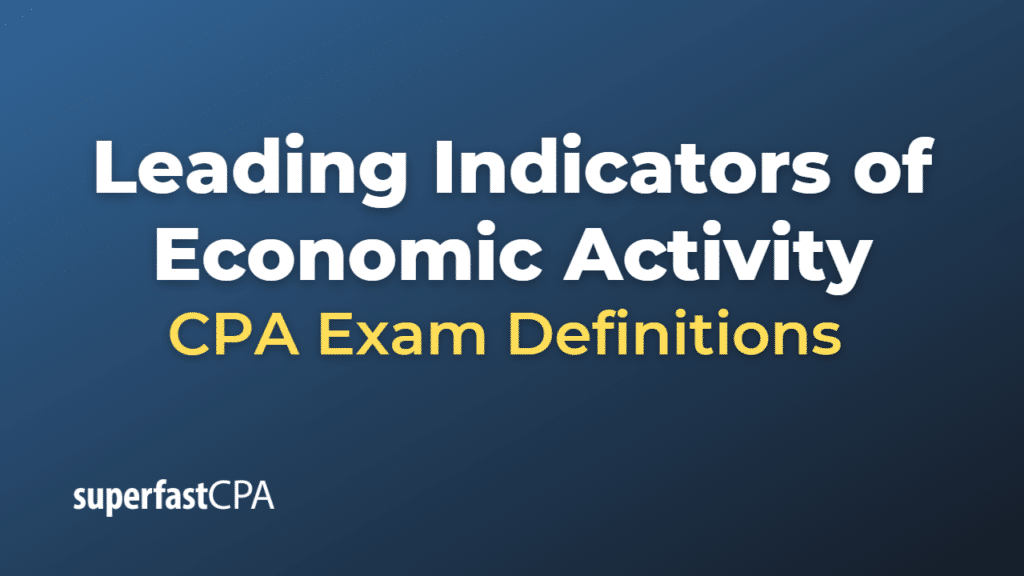Leading Indicators of Economic Activity
Leading indicators are economic variables that tend to change before the overall economy starts to follow a particular pattern or trend. They are used by economists, policymakers, and market analysts to predict upcoming shifts in economic activity, such as the onset of a recession or the beginning of an expansion. Leading indicators provide insights into the future direction of an economy and can help decision-makers implement appropriate policies and strategies. Some common leading indicators include:
- Stock market performance: Changes in stock market indexes, such as the S&P 500 or Dow Jones Industrial Average, often precede changes in the overall economy. A rising stock market may signal increased investor confidence and an upcoming period of economic growth, while a falling stock market may suggest weakening investor confidence and a potential economic downturn.
- Building permits: An increase in the number of building permits issued for residential and commercial construction projects can signal future growth in construction activity and related industries, suggesting economic expansion. Conversely, a decline in building permits can indicate an impending economic slowdown.
- Manufacturing activity: Surveys of manufacturing activity, such as the Purchasing Managers’ Index (PMI), can provide insights into future production levels, as manufacturers typically increase or decrease production in response to expected changes in demand. A rising PMI indicates an expansion in manufacturing activity and may signal overall economic growth, while a falling PMI suggests a contraction in manufacturing activity and a possible economic downturn.
- New orders for durable goods: An increase in new orders for durable goods (products with a useful life of more than three years, such as machinery and vehicles) can indicate future growth in production and investment, pointing to economic expansion. A decrease in new orders for durable goods can signal a decline in production and investment, suggesting an economic slowdown.
- Initial jobless claims: The number of people filing for unemployment benefits for the first time can serve as a leading indicator of the labor market’s health. A decrease in initial jobless claims may signal an improving job market and economic expansion, while an increase in initial jobless claims can suggest a weakening job market and potential economic contraction.
- Consumer sentiment: Surveys measuring consumer confidence, such as the University of Michigan’s Consumer Sentiment Index or the Conference Board’s Consumer Confidence Index, can provide insights into future consumer spending patterns. A rise in consumer sentiment may indicate increased consumer spending and economic growth, while a decline in consumer sentiment can signal reduced consumer spending and a potential economic slowdown.
- Yield curve: The yield curve, which plots the interest rates of bonds with different maturities, can serve as a leading indicator of economic activity. An inverted yield curve, where short-term interest rates are higher than long-term interest rates, has historically preceded recessions. A normal or steepening yield curve, where long-term interest rates are higher than short-term rates, can signal economic expansion.
These leading indicators, when considered together, can provide valuable information about the future direction of an economy. However, they should be interpreted with caution, as no single indicator can predict economic activity with complete accuracy, and false signals can occur.













